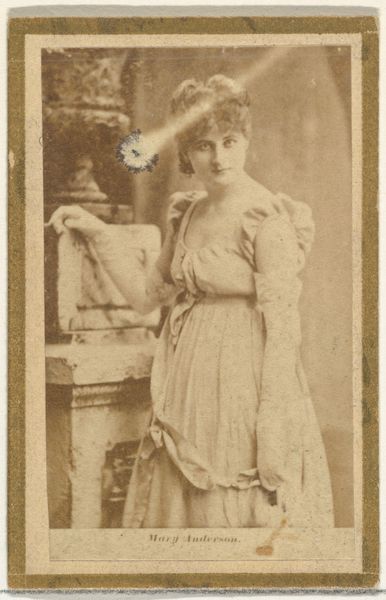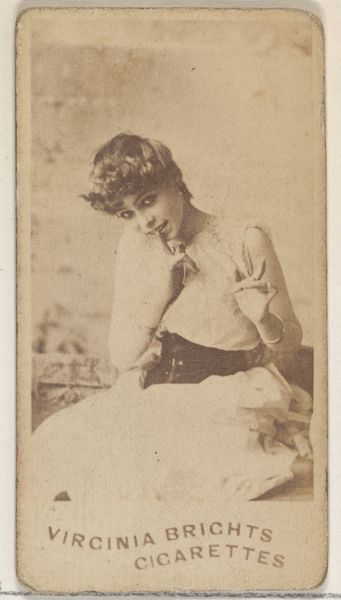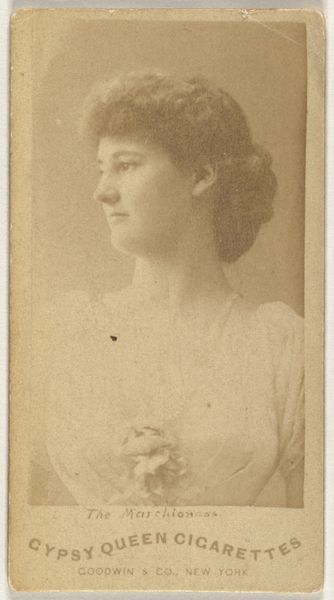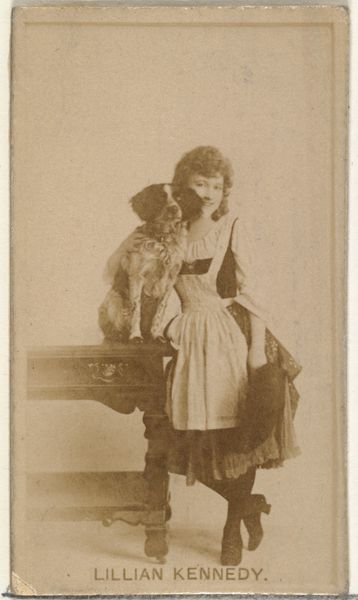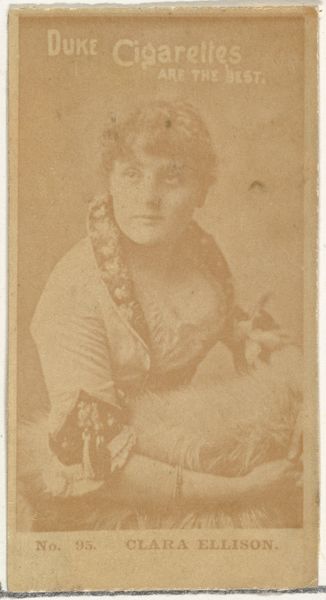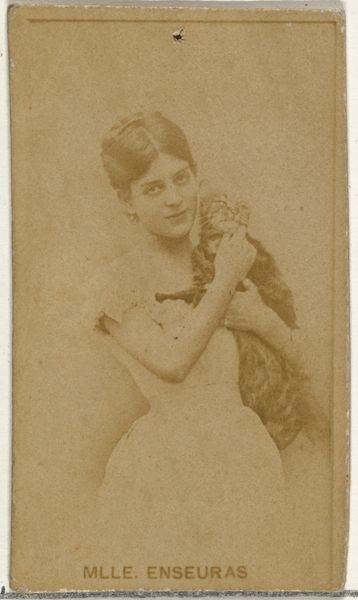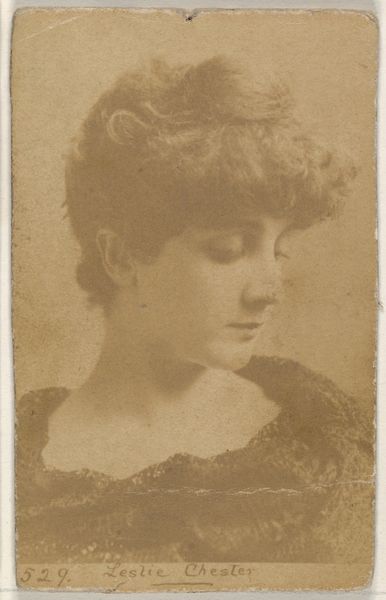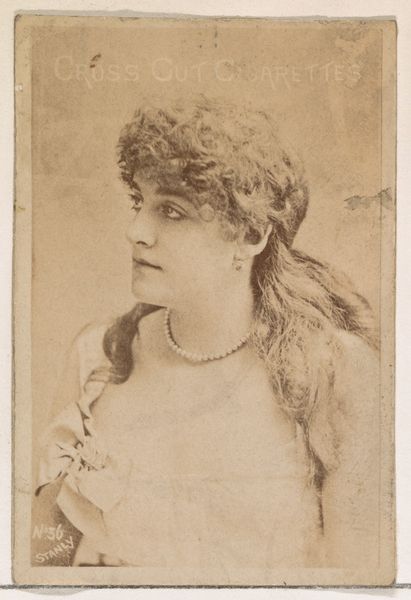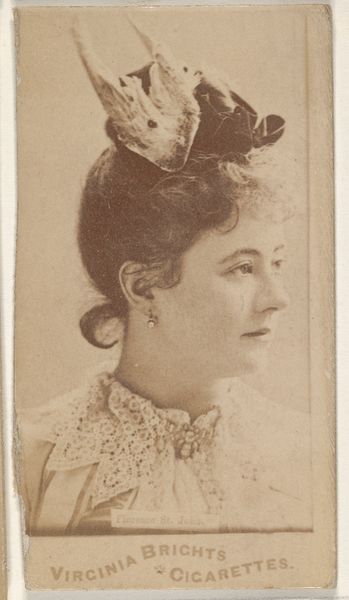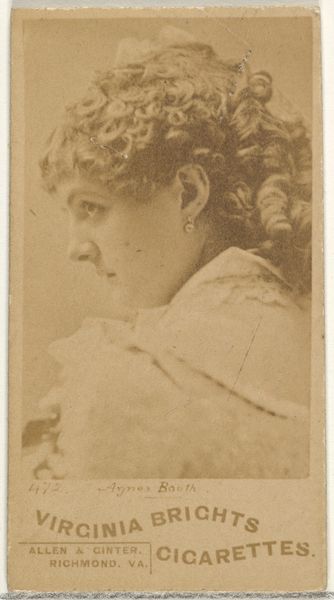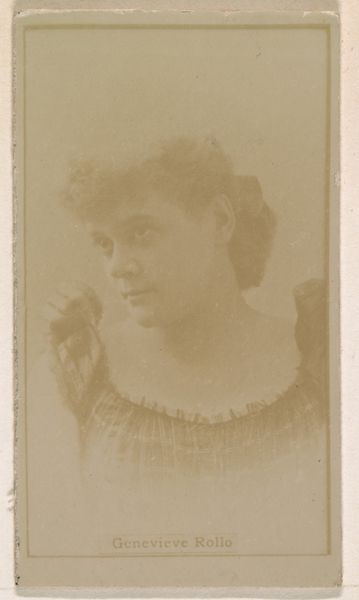
Miss Wilson, from the Actors and Actresses series (N45, Type 1) for Virginia Brights Cigarettes 1885 - 1891
0:00
0:00
drawing, print, photography
#
portrait
#
drawing
#
pictorialism
# print
#
photography
#
genre-painting
#
realism
Dimensions: Sheet: 2 3/4 x 1 3/8 in. (7 x 3.5 cm)
Copyright: Public Domain
Curator: Looking at this photograph, there's an immediate sense of serenity. The sepia tone lends it an antique quality. Editor: This is "Miss Wilson," part of the Actors and Actresses series produced between 1885 and 1891 by Allen & Ginter for Virginia Brights Cigarettes. It's a photographic print, originally a lithograph and is at The Met. These cards were enormously popular at the time; you’d find them inserted directly into cigarette packs. Curator: It’s remarkable how consumer culture so often intertwines with artistic representation. I’m intrigued by the composition. Miss Wilson's delicate profile, contrasted with the soft texture of what looks like a dove, creates a narrative about femininity and its presumed connection to purity or gentleness. Do you think this piece engages with societal expectations of women at the time? Editor: Absolutely. These trade cards operated within a system where mass-produced images shaped public perception. I think, beyond mere aesthetic appreciation, we have to examine the industrial processes that enabled this widespread distribution. The cheap labor and materials involved, the mechanisms of printing and packaging— these are crucial components. Curator: The distribution as part of a mass produced item also raises the question of labor relations. It prompts us to think critically about gender roles. Was Miss Wilson aware her likeness would become part of this consumeristic enterprise? Editor: Likely so; many performers actively sought this type of publicity. I also notice the rather simplistic background. Curator: Yes, the plain backdrop focuses attention on Miss Wilson's face and, crucially, the bird. It simplifies the image into types, distilling the ideas around beauty for that consumer base. Editor: And it allowed them to cheaply produce the image en masse using techniques to give texture, for broad appeal in the expanding consumer market. Curator: This piece invites us to unpack layered meanings related to consumerism, artistic representation, and, in particular, how women were both portrayed and potentially commodified. Editor: Exactly. Seeing “Miss Wilson” through the lens of material culture challenges us to see her not just as an image, but as a point of intersection in various production networks.
Comments
No comments
Be the first to comment and join the conversation on the ultimate creative platform.
